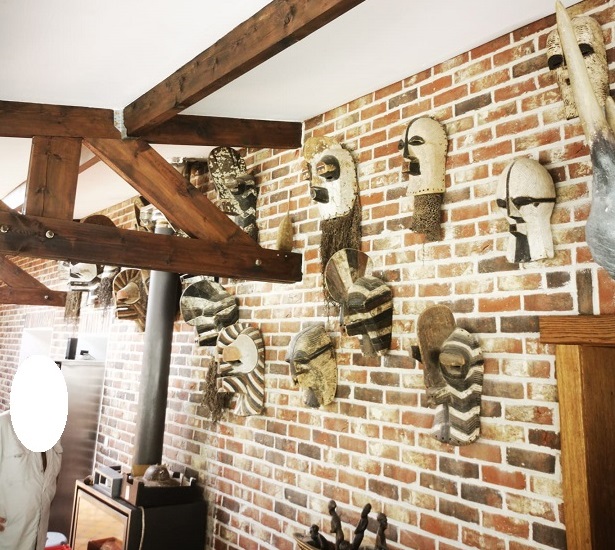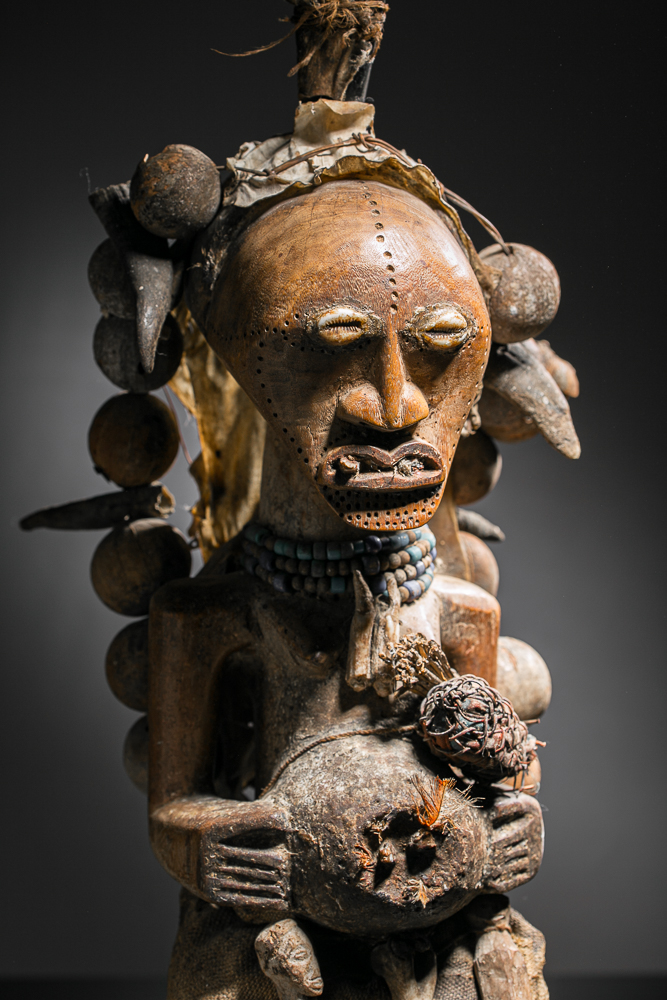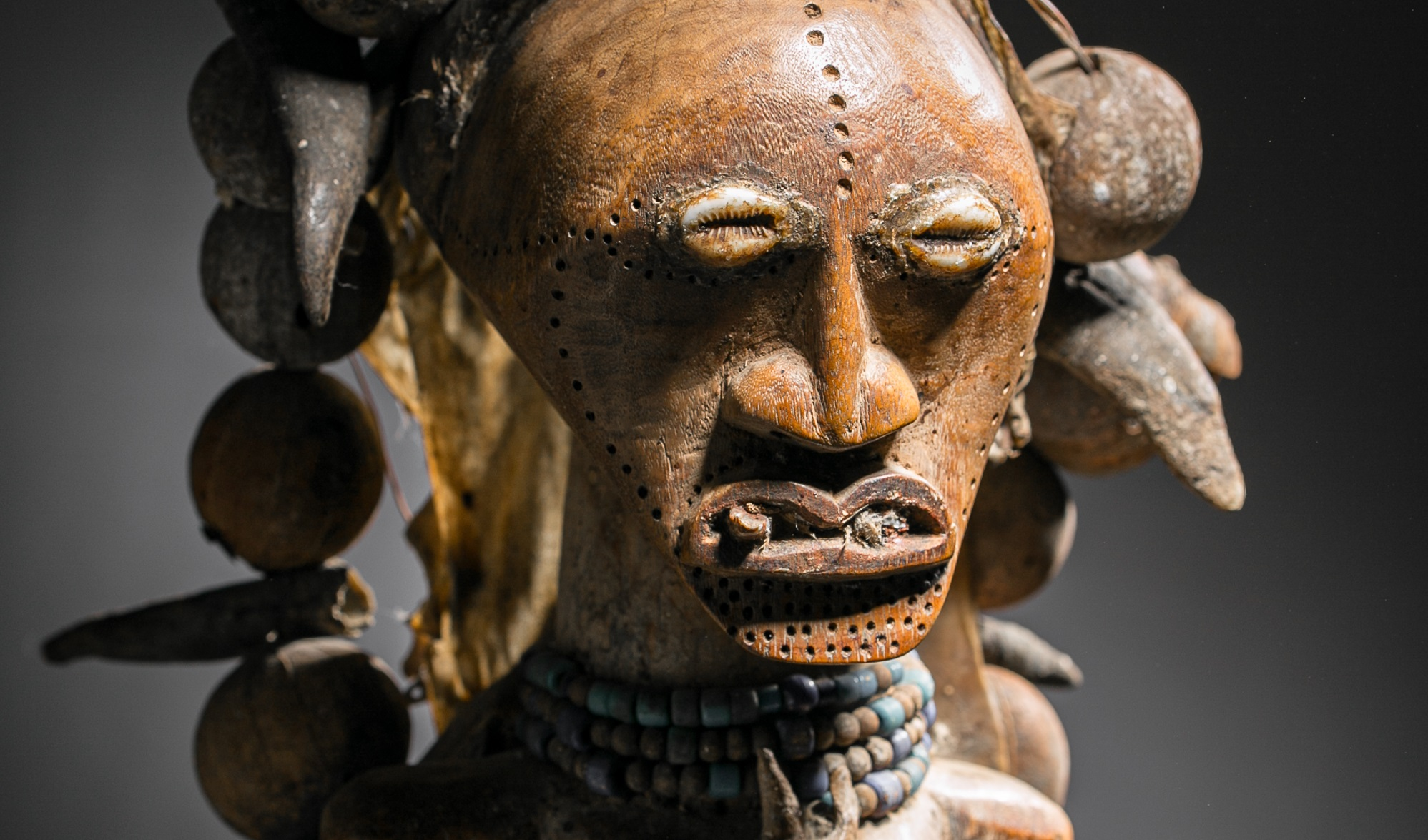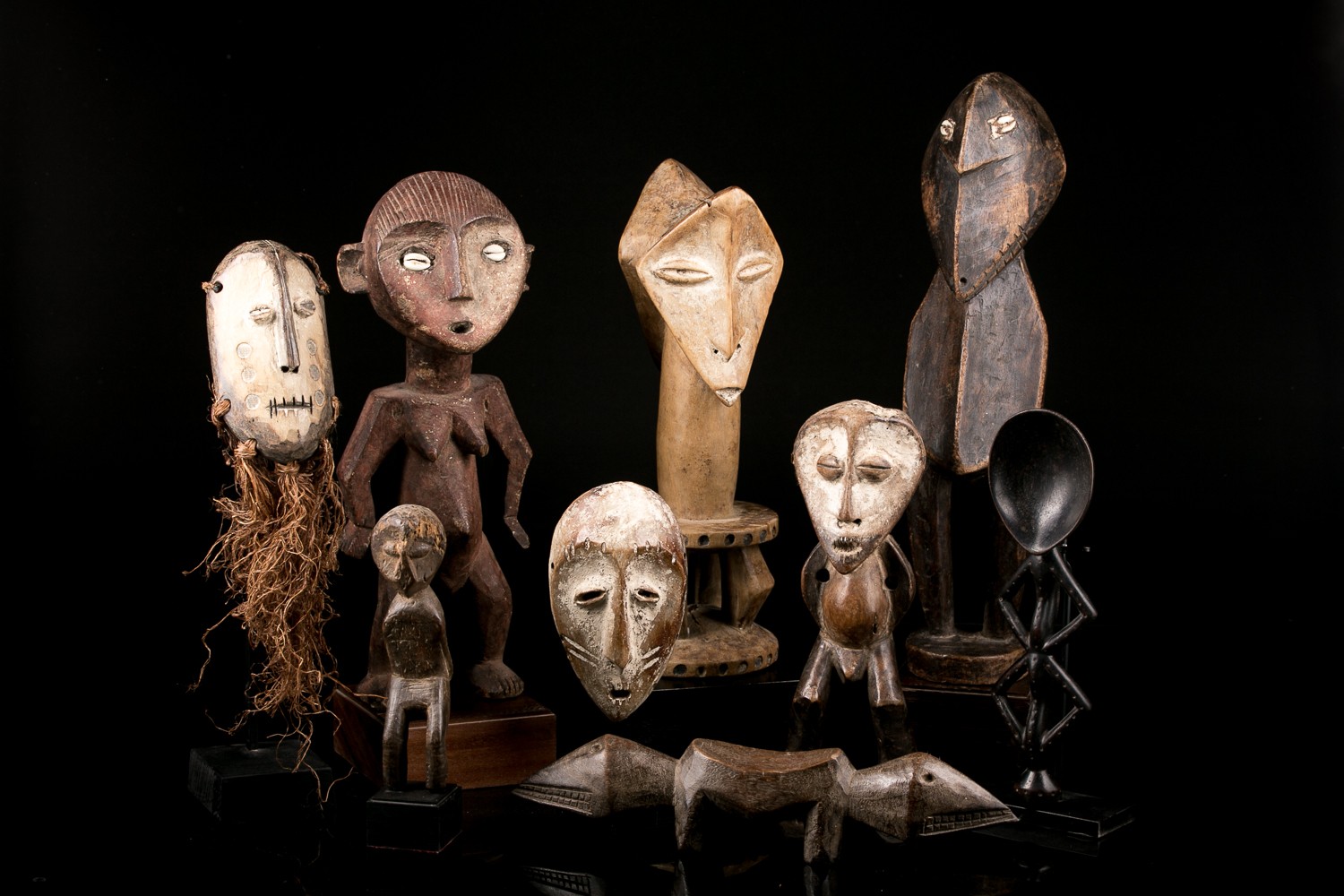African arts over three generations
A century is the length of time that the Belgian Soubry family from Diksmude has been linked to the Democratic Republic of Congo and traditional African art.
Over nearly a hundred years of presence and interest in the Congo, the Soubry family has collected an impressive collection of objects including remarkable examples of Songye masks from the bwadi bwa kifwebe, important statues of Songye power but also a vast wide range of Pende, Kongo and northern Congo objects including ceramics, traditional instruments and shields.
Our gallery is fortunate to be able to exclusively offer you other works from the Soubry family collection, see at the bottom.

Chronology of a century of collecting
Michel Soubry father: first contacts at the beginning of the 20th century
It all began in 1922, when Michel Soubry left for the Congo where he was employed by Cotonco, one of the three largest companies in the country, along with Forminière and UMHK. He died there in 1932 in Kongolo (province of Tanganyika, formerly Katanga).
Her sister Madeleine also arrived in the Congo in the 1920s with her husband Michel Moncarey, a doctor in the gold mining region of Kilo Moto between the localities of Watsa and Bunia (Haut-Uele and Ituri provinces). Until 1963, the couple provided medical care in hospitals and dispensaries before founding a clinic in Bunia.
Adelin, the youngest, graduated from the Koloniale Hogheschool in Antwerp, is accompanied by his wife Ivonne Hoornaert, daughter of the first police commissioner of Knokke. Both boarded the liner Thysville in Antwerp to join Matadi in 1928. Adelin held the position of territorial agent in Ruyigi then in Kitega, in Urundi. The couple gave birth to Yolanda in 1929 and Fernand in 1930.
.jpeg)
African art objects from the Soubry collection
The couple returned to Belgium for six months in 1931. The family returned to service in 1932 in Muhinga, still in Burundi. During this period, Adelin became interested and familiar with the cultures of Tutsi (the dominant aristocratic class), Hutu (farmers and servants) as well as Batwa (pygmoid hunters).
From this interest began to emerge a passion for collecting objects such as basketwork, pottery, shields and knives.
Adelin and his family left Burundi at the end of 1939. The father was then appointed principal territorial administrator in Aketi, in the Bas-Uele region (north Congo).
In this area the Binza, Boa and Zande ethnic groups live together. Until the end of this mission, in 1943, Adelin refined her passion and knowledge of the arts of this very prolific region into statuettes and masks.
Several missions still awaited him until 1947 in northern Congo during which he discovered the Mangbetu, Avungara, Abarambo, Kumu, Metoko arts and many others. His last missions took him to Stanleyville (Kisangani) until 1955.
In these volcanic regions, the inspections he carries out allow him to discover Mbole traditions and works of art. In 1962, a politically turbulent period, Adelin was threatened and therefore decided to return to Belgium. He died there the following year, leaving his collection to his son Fernand.
Thus ends the first generation of the Soubry collection.
Fernand Soubry: continuation of his father's work
Impregnated from childhood by the traditions and arts of the Congo, Fernand takes great care of his father's inheritance made up of numerous objects from the north of the country. Residing in Knokke at the end of his studies, the inextinguishable call of the bush and unknown lands beat within him, which led him in 1960 to go to his father's friends established in the Kalemie region, the capital. from the province of Tanganyika.
This stay of several months allowed him to discover the rites of bukishi and to get his hands on his first Songye pieces: masks and fetishes.
Fernand will repeat these stays in the south of the country in search of sculptural forms and African traditions.
The third quarter of the 20th century was conducive to the study of ethnic cultures thanks to the facilitation of travel compared to before 1950. Passionate but respectful of the natives, he thus had the privilege of witnessing the use of objects in their ritual context and sometimes to obtain them through barter or as thanks.
Over the decades, his impressive villa became a private family museum where several hundred pieces from all walks of life, mainly Congolese, were brought together.
.jpeg)
Michel Soubry fils: evolution and auction of the family collection
Fernand passed on his taste for the arts to his son Michel. Based in Walhain-Saint-Paul (Walloon Brabant), the latter further supplements the important family collection through acquisitions in sales rooms, at fairs and from gallery owners. His sensitivity leads him to explore contemporary art and European arts which he likes to carefully combine with African objects in his sumptuous home.
In 2022, a book is dedicated to the collection as part of its dispersal under the hammer of expert Dimitri André. A sale which met with great, justified and deserved success.
At the end of 2023, one of the pieces from the collection, a remarkable statue of Nkishi power still equipped with its magical accessories, was sold for $13,200, more than three times its initial price, at Arte Primitivo, an auction house in New York auction.
A great added value for the lucky collector who has resold the fetish and an endorsement by the African tribal art market.



 By Rédacteur
By Rédacteur


